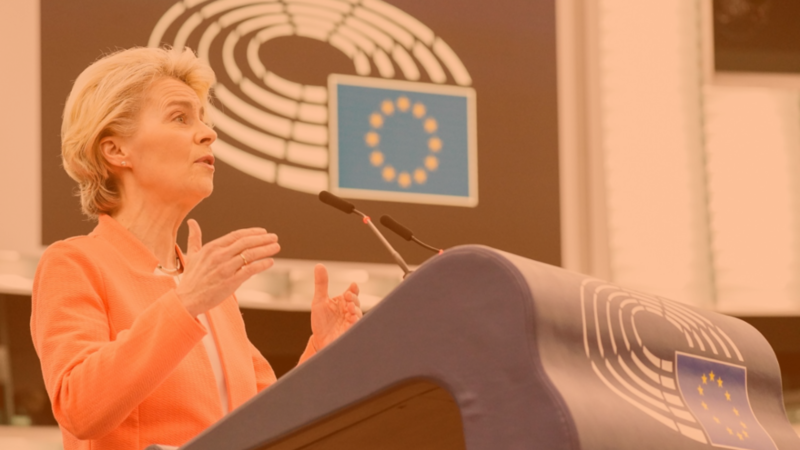The United States is experiencing an investment boom, owing to industrial policies that grant enormous subsidies – including to European firms – for investing in America, largely in green tech. Europe, meanwhile, is responding with a return to the austerity policies that caused it to fall behind the US in the first place
In 2008 Europeans earned, in aggregate, 10 percent more than Americans. By 2022, Americans were earning 26 percent more than Europeans. This week, the Wall Street Journal confirmed that Europeans are becoming poorer not just collectively but also privately. This shocking reversal of fortune was caused by the unprecedented level of austerity European governments inflicted upon their economies following the 2008 global financial crisis.
Austerity is not only bad for vulnerable people in need of state support during tough times; it also stifles investment. In any economy, collective expenditure equals collective income. By substantially reducing public expenditure at a time when private expenditure was falling, European governments hastened the rate at which total income diminished.
Is it any wonder that Europe’s businesses refused to invest in the capacity to produce stuff that consumers would not have the money to buy? That’s how post-2008 austerity slayed continent-wide investment and put Europe on a path of secular decline.
Every austerity drive hits one area of fiscal expenditure first and hard: public investment, which, compared to other relatively inelastic government outlays, like pensions and public-sector salaries, is the softest target of budget cutters. So, it was the long-term dampening effect of austerity on public investment, not just the effect on aggregate demand and private investment, that left Europe permanently scarred.
Today, more than a decade later, the eurozone features lower levels of public investment (as a percentage of aggregate income) than any other advanced economy or economic bloc. And if we exclude Ireland, as we must (given its GDP contains multinationals’ income that the Irish never see), Europe’s economic powerhouse, Germany, comes last within Europe in terms of its rate of overall investment.
Apart from luxury goods (where companies like LVMH, Hermès, Porsche, and Ferrari lead the way) and soccer, Europe is becoming an economic minnow. The mighty German car industry may have retained its output but its value-added is in long-term decline.
Across Europe, investment in manufacturing green tech is woeful. Batteries, artificial intelligence, and all the digital technologies that are driving global growth have left Europe in their wake. Back in 1990, Europe was manufacturing 44 percent of the world’s semiconductors; now it only makes 9 percent (the US produces 12 percent). Big Tech is almost exclusively American and Chinese. Of the top 20 tech companies worldwide, only two, ASML and SAP, are European.
The pandemic put Europe’s austerity drive on hold for a few years as the EU’s fiscal rules were suspended and governments went on a spending spree to support businesses’ bottom line. A Recovery Fund was announced, which many rushed to herald as Europe’s Hamiltonian moment. It was, of course, no such thing (as I warned at the time).
The pandemic was yet another global crisis that put Europe at a disadvantage relative to America. Europe’s stimulus was not only smaller than the US package; it also packed a smaller punch for every euro spent because, unlike in the United States, where a larger share of public money was sent as grants directly to citizens, European governments favored firms. And since firms in bad times are substantially less likely to spend money (except on their own shares) than citizens are, Europe’s stimulus was even smaller than the headline numbers suggest.
Economic historians will look back to the 2008 financial crash, the post-2009 public debt crisis that ensued, and the pandemic as a sequence of opportunities Europe’s elites chose to miss, instead defaulting to austerity as soon as circumstances permitted. Most commentators blame this on irrational fear of inflation (owing to, say, Germans’ collective memory of the Weimar Republic), macroeconomic illiteracy, or other factors. I have argued that it is primarily motivated by an enduring class enmity toward Europe’s working people.
Regardless of the reason, the fact is that Europe is about to make the same mistake at the worst possible moment. While our industry and infrastructure are wilting after years of underinvestment, the US is experiencing an investment boom, owing to President Joe Biden’s policy agenda, which grants enormous subsidies to companies (including European firms) that invest in America, largely in green tech.
The EU, meanwhile, is responding the only way it seems to know: with moves to restore the fiscal rules that will revive the austerity policies that caused Europe’s relative immiseration in the first place.
The writing is on the wall. Europe will make noises about setting up its own investment fund to counter America’s new industrial policies, but the result will be underwhelming and as divisive as the Recovery Fund was.
As Europe continues to lose ground and its net exports to America and to China decline (also because of the “de-risking” policies the US is imposing on the EU), Europe’s protectionists will gain an upper hand, turning their ire more toward China than America. The costs of having shifted from Gazprom’s cheap gas to expensive liquefied natural gas shipped from the Gulf of Mexico notwithstanding, soon the costs of advanced solar panels (which only the Chinese can provide at low prices) will rise, along with the costs of the entire green-energy transition.
Currently, Europe’s commentariat is still worried about inflation, which is understandable given that our conglomerates have used their market power to fatten their profit margins during the cost-of-living crisis. But, beneath the European economy’s surface, the true danger is a fresh recessionary dynamic – which we can already see in the money supply and total investment data.
It takes no prophet to see what’s in store for Europe as austerity returns. Life in Europe will continue to get pricier as real wages fall and the quality of jobs worsens. Meanwhile, Europe, as an idea and an entity, will follow the majority of Europe’s working people down the narrowing path they have been on for more than a decade.
This article was originally published on Project Syndicate
Do you want to be informed of DiEM25's actions? Sign up here















